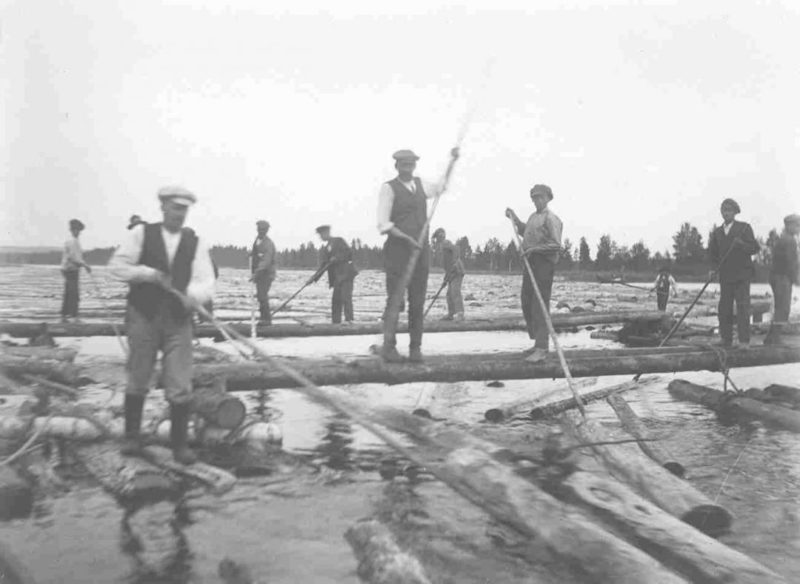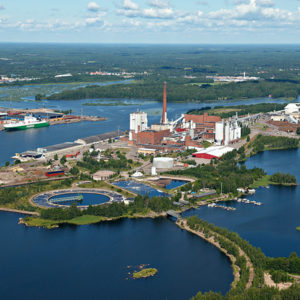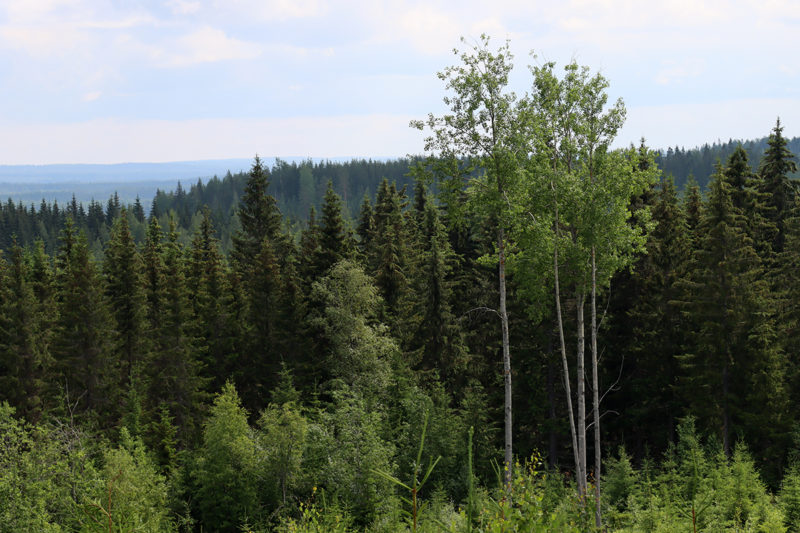4 reasons why Nordic countries are a great forestry power – the base was founded by Ice Age

It was the continental ice layer melting after the Ice Age that made Nordic countries favorable for modern forestry and forest industry in many ways. In addition to this, far-reaching decision-making was needed.
Finland’s bedrock is truly ancient, for the most part 1,800–2,600 million years old. Th e history of organic nature, in contrast, is very short in the Nordic countries.
As late as 20,000 years ago, all of Finland was covered by a continental ice layer with a thickness of several
kilometres. As the ice melted 13,000–10,000 years ago, life returned to Finland from the east and the south-east, from areas that had been bare of ice throughout the Ice Age.
The kilometres-thick continental ice depressed and deformed the bedrock. With the melting of ice, Earth’s crust began a rebound, a process that still continues.
1. Withdrawing ice cover melted and created the soil
As the ice started to melt, most of present day southern Finland remained submerged under a succession of ancient seas and lakes. The dunes, boulder fields and shelves on the shores of what is now the Baltic Sea are visible today at the height of 200 metres over sea level on the hillsides of south-west Lapland and at about 100 metres on the slopes of the Salpausselkä ridge system in the south-east.
The Ice Age – the moving continental ice mass, the events during its melting and the rebound – has had a considerable impact on both landscape and the conditions for forestry.
The continental ice mass scraped down the bedrock and mixed the debris, consisting of different types of rock, into homogeneous till. Rivers running underneath the glacier and in its crevasses heaped sand and gravel into eskers.
Where a subglacial river flowed out into a lake or a sea, an extensive, sandy delta was formed. The finest matter transported by the rivers – clay and silt – settled on the bottom of lakes and seas.
2. Retreating ice levelled the terrain and created passable waterways
The moving ice mass levelled the terrain and also created the systems of shallow lakes connected by rivers.

As land areas were freed of ice, they first became covered by patches of vegetation, combining characteristics of both tundra and steppe. The phase of open ground was, however, short, since the climate was warm and trees rapidly colonised the land emerging from under the ice.
In the warm climate, hardwood trees, common hazel and black alder spread much farther inland than they are found today. In the driest areas, pine grew among the broadleaves, but spruce was scarce.
About 6,000 years ago, as the climate grew cooler, paludification increased and spruce became more abundant. Spruce only reached the Åland islands around the beginning of the Common Era.
Hardwood trees lost ground due to the proliferation of spruce and paludification, but just as importantly, to human activity.
Today, the eskers and ancient river deltas are covered by xeric pine forests. Mesic till is favoured by spruce. The originally under water created clay and silt sediments have either turned into mires or been taken
into agricultural use, or carry herb-rich forests after the rebound of the Earth surface.

3. The Ice Age decreased the amount of tree species
The past two million years have seen several Ice Ages, causing the extinction of a number of tree species in Europe, including magnolia, redwoods, hemlocks and thujas. Owing to this weeding out, the number of tree species in Finland is quite limited.
Since the topography has relatively little variation, the soil is homogeneous and there are few tree species, the conditions for plan-based and financially viable forestry are good.
We only have to compare this with forestry and harvesting at the other extremity of forest nature, in the Amazonian rainforest, where a single hectare may boast over a hundred different tree species. It is not by accident that Finland and the Nordic countries have become the great powers of forestry.
There are about 30 tree species in Finland, about ten of which are commonly found in most parts of the country. The only ones with financial significance are Scots pine, spruce, silver birch, downy birch and aspen, but the others are also valuable for biodiversity.
In many countries, especially those located in more temperate zones than Finland, the production of timber is based on imported tree species. In Finland, forestry is based only on indigenous species, and as long as this is the case, the majority of the species living in forests are safe.
The only imported tree species with any silvicultural importance is larch. Its natural distribution area is close enough to Finland that its accompanying species are also found here.
With the warming of the climate, spruce stands in southern Finland may be replaced with the American Douglas fir. Its ecology and accompanying species are very similar to those of spruce, and cultivating it to a moderate extent would not be likely to cause problems.
4. Finns have learned how to take care of their forests
Finland is one of the most widely forested countries in the world. Depending on which definition is used, two thirds or even three quarters of its land area is forested.
The situation of forest protection, too, is good in an international comparison: nearly one fifth of the forests is under different levels of protection, and the share of strictly protected forests excluded from all commercial activity is over one tenth of the total forest area.
A comparison conducted during the COST E4 action, covering all European countries, showed that over one half of the strictly protected forests in Western Europe are found in Finland. The same is proved by the European Union’s State of Europe’s forests 2020 report.
According to a report by the Humboldt University, Berlin, 2.9 percent of the land area of Finland consists of forests in a natural state. This is more than in any other country in Western Europe.
Timber production in Finland aims at structural features common in natural forests. Various nature values are spared. These include habitats defined in the Forest Act, sites with exceptional features and identified endangered species as well as decaying and hollow trees.
That the situation is better than is generally thought is evidenced by the fact that in recent years, several species thought to be extinct, as well as species previously unknown to science, have been found in Finnish forests.

The article is an excerpt of the book Cultivation and care – forestry and biodiversity written by Seppo Vuokko. The text is edited by Hannes Mäntyranta. The book has been published by the publisher of forest.fi, the Finnish Forest Association.
